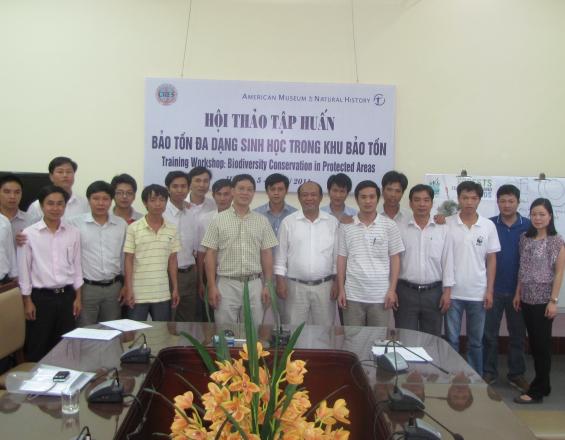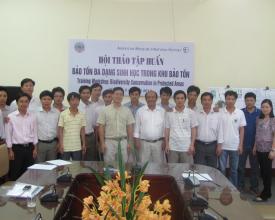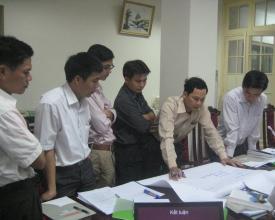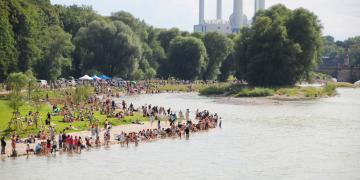
Capacity building in biodiversity conservation and PA management in Vietnam

A system of protected areas has been established in Vietnam primarily to address the problems of overexploitation and habitat loss. However, the pressures on biodiversity and PAs have become increasingly varied and severe over the last decades. This solution centered on the design and implementation of a pilot training program in biodiversity conservation and protected area management for conservation workers in the country to help them effectively manage the PAs.
Traiter
Summary of the process
We were able to increase capacity in Vietnamese PAs by aligning the three building blocks described above: by assessing training needs, then designing the training curriculum and custom supporting training materials in response to those needs, and finally by implementing the training locally using that curriculum as a base, and intensive and active modalities. Conservation practitioners and PA managers learned critical skills, knowledge, and tools in conservation, such as GIS, biodiversity survey and monitoring, and law enforcement, and shared their experiences through different in-class activities. The resources have been widely distributed among conservation practitioners and PA managers as well as used in other training courses across the country. As they continue to be used, they are building capacity in biodiversity conservation and PA management for a cadre of conservation practitioners, enhancing biodiversity conservation and sustainable development within the PA system. The cycle of assessing training needs, designing curricula and materials, and training can be repeated in the future as training needs change.
Building Blocks
Training needs assessment
Enabling factors
Lesson learned
Intensive and active training courses in PA management
Enabling factors
Lesson learned
Curriculum design workshop
Enabling factors
Lesson learned
Impacts
The project strengthened professional capacity in protected area management and biodiversity conservation in PAs throughout Vietnam. The training courses provided a platform for discussing threats to conservation in the country and in the region to help conservation practitioners understand the complexity of conservation problems and potential solutions. Participants were equipped with fundamental principles of conservation science as well as skills to apply appropriate conservation tools to problems in their PAs. Many trainees strongly believed that the program helped them better understand concepts in biodiversity and conservation, and ultimately helped them perform better in their work.
Beneficiaries
PA managers and conservation practitioners and Vietnam Protected Areas System
Sustainable Development Goals
Story
During our current research and training work across Vietnam, we often meet with the course trainees in their protected areas. Many of the trainees are heavily involved in species conservation programs and site management projects at the local level. They have become more proactive in their approaches towards conservation, and show their leadership in the field. For example, Dr. Hoa Vuong (Vuong Duc Hoa) was head of the scientific department at the time of the training course, and became deputy director of Bu Gia Map National Park. He has supported multiple collaborative slow loris surveys and conservation initiatives in Bu Gia Map National Park (in 2013, 2014) and has also attended recent workshops in Hanoi on the primate conservation action plan and on slow loris conservation (2016 and 2014 respectively). He has shepherded several new conservation monitoring programs especially for endangered primates in the park. And he has been very supportive of initiatives proposed by his staff to advance conservation in the area. In addition, we now collaborate with several course participants in field surveys of lorises, pheasants, and turtles across the country, including for example, Bu Gia Map National Park in the south, Bach Ma National Park and Saola Nature Reserve in the central region, and Na Nang nature reserve in the north of Vietnam. Their capacity helps our research tremendously in obtaining valuable baseline data for conservation of highly threatened taxa. We also interact with them in national-level workshops such as the launch workshop for the Vietnam national primate conservation action plan, hosted in Hanoi by our organization in collaboration with the Vietnam Forestry Administration, where the local experiences of our trainees were extremely important to inform action planning at the national level. As biodiversity conservation in the country is facing a daunting challenge, we can see hope in the increased capacity of conservation practitioners. They will undoubtedly take up the challenge, and also inspire others.






